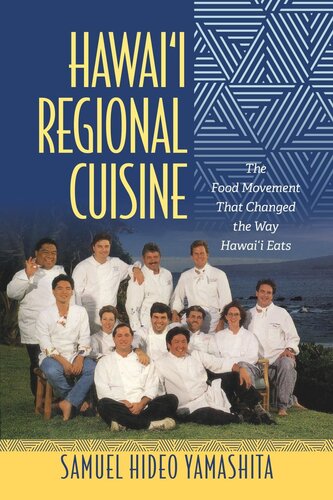

Most ebook files are in PDF format, so you can easily read them using various software such as Foxit Reader or directly on the Google Chrome browser.
Some ebook files are released by publishers in other formats such as .awz, .mobi, .epub, .fb2, etc. You may need to install specific software to read these formats on mobile/PC, such as Calibre.
Please read the tutorial at this link: https://ebookbell.com/faq
We offer FREE conversion to the popular formats you request; however, this may take some time. Therefore, right after payment, please email us, and we will try to provide the service as quickly as possible.
For some exceptional file formats or broken links (if any), please refrain from opening any disputes. Instead, email us first, and we will try to assist within a maximum of 6 hours.
EbookBell Team

4.0
66 reviewsSamuel H. Yamashita’s Hawai‘i Regional Cuisine: The Food Movement That Changed the Way Hawai‘i Eats is the first in-depth study on the origins, philosophy, development, and legacy of Hawai‘i Regional Cuisine (HRC). The book is based on interviews with thirty-six chefs, farmers, retailers, culinary arts educators, and food writers, as well as on nearly everything written about the HRC chefs in the national and local media. Yamashita follows the history of this important regional movement from its origins in 1991 through the following decades, offering a boldly original analysis of its cuisine and impact on the islands.
The founding group of twelve chefs—Sam Choy, Roger Dikon, Mark Ellman, Amy Ferguson Ota, Beverly Gannon, Jean-Marie Josselin, George Mavrothalassitis, Peter Merriman, Philippe Padovani, Gary Strehl, Alan Wong, and Roy Yamaguchi—grandly announced in August 1991 the establishment of what they called Hawai‘i Regional Cuisine. At the time, they had no idea how dramatically they would change the food scene in the islands. While they each had their own style, their common commitment to using fresh, locally sourced ingredients of the highest quality at their restaurants quickly attracted the interest of journalists writing for national newspapers and magazines.
The final chapters close with a discussion of the leading chefs of the next generation and an assessment of HRC's impact on farming, fishing, ranching, aquaculture, and culinary education in the islands. Hawai‘i Regional Cuisine will satisfy those who are passionate about food and intrigued by changes in local foodways.